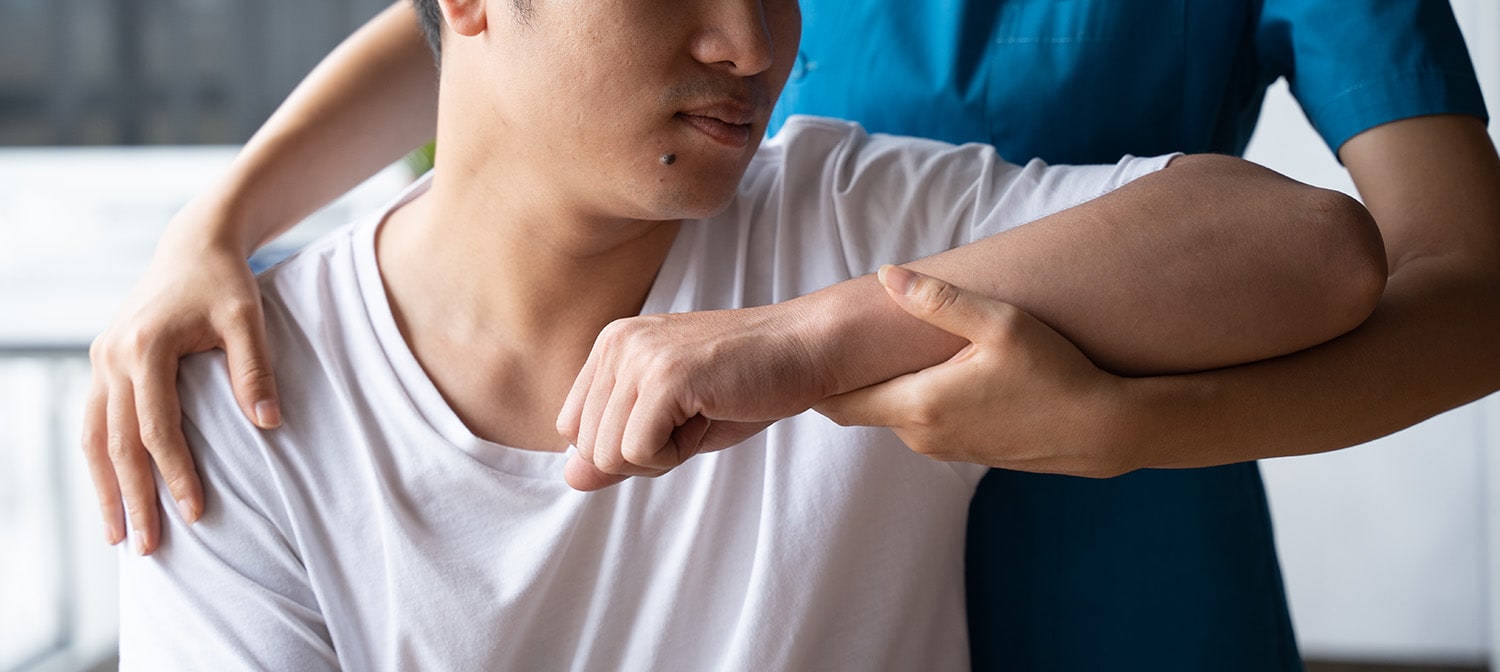
Fascia is connective tissue that holds everything in your body together. It surrounds and supports every bone, organ, joint, muscle, nerve and blood vessel. Healthy fascia creates mobility and stability. It can move freely and glide on neighboring structures while holding things together.
The reason that fascia needs to be addressed is because it can become restricted: damaged, stuck, torn, or dried out, resulting in loss of motion and pain. Because it's everywhere in the body, it is all connected. That means that when one area of fascia is not in its optimal state, it can compromise tissue locally or even somewhere else in the body. A useful visual is to picture a knitted sweater. If you pull a thread down at the bottom and tie it in a knot, that thread will create a pull higher up into the sweater, creating an imbalance in how the sweater will hang and move. You wouldn’t be able to straighten out the top of the sweater without freeing the knot at the bottom.
The musculo-skeletal system includes the bones and muscles. Myofascia is the connective tissue that surrounds/ supports/ separates and connects this system. Muscles are held together in groups yet separated for individual coordinated function. Nerves and blood vessels feed the muscles and need to be able to glide freely next to structures and through spaces so that they function properly.
Myofascial therapy can deeply effect every part of the body because everything is connected via the connective tissues. Release of a restriction in one area may free up tension in another area. The goal is to free up restrictions in the body that are causing pain or tension or reducing your ability to move freely. Myofascial techniques will often be used in areas that might seem far away from where your pain is. Unlike massage, lubricants are not used and there is no set routine that is followed. Each session is usually different as your body will be changing with each treatment. MFR techniques can benefit many who struggle with chronic pain issues, failed surgeries, postural dysfunction, scar tissue adhesions and more.
The central nervous system includes the brain and spinal cord. Surrounding, as well as within these structures, are the deepest layers of connective tissue or fascia. Restrictions can develop in these layers of fascia just as easily as anywhere else in the body. Treatment of these deepest fascial layers is called Craniosacral therapy. It is a very gentle technique and can benefit many who suffer with headaches, TMJ, post-concussion syndrome, sinus pain, and neck and back pain.
More information can be found at www.upledger.com
The viscera refers to the internal organs. Like all other areas of the body, the viscera are supported and separated by fascia. Connective tissue holds organs in place, allows them to slide upon each other, and creates spaces for nerves, blood vessels and lymphatic circulation. If the fascia around the organs becomes adhered or restricted, it can pull on other things and cause problems locally or in other areas of the body. People often think of tightness in muscles when they have postural changes or tension and pain. However, tightness in the connective tissue around the organs can be a culprit in musculo-skeletal issues.
Visceral mobilization (or manipulation) is a very gentle technique. The goal is to release restrictions in the connective tissue and ligaments which surround the organs and attach them to the skeleton. This is not done to treat the organs, rather it is to restore mobility to the structures that support the organs.
More information can be found at www.barralinstitute.com
Kinesio Taping became popular after the 2012 Olympics when many athletes (notably our gold medal beach volleyball women!) were taped up for competition. K-Tape is a stretchy, breathable cotton tape that is used on the skin in various ways to increase circulation, relieve pain, improve range of motion, and to improve proprioception (sensing where you are in space). It is used after manual therapy to assist with learning to use the improved alignment and mobility that are gained during a session.
More information can be found at www.kinesiotaping.com